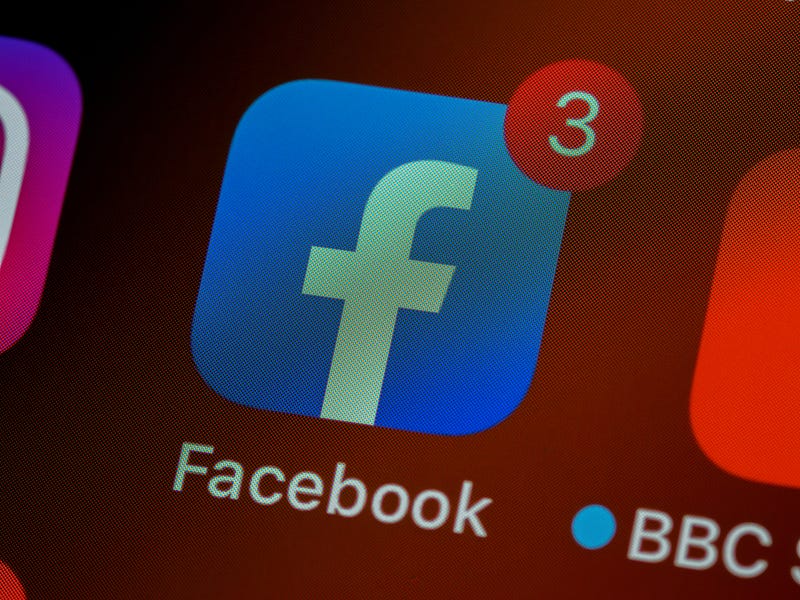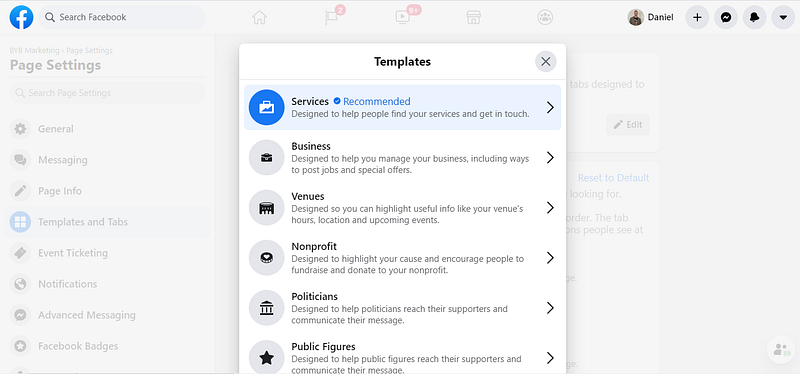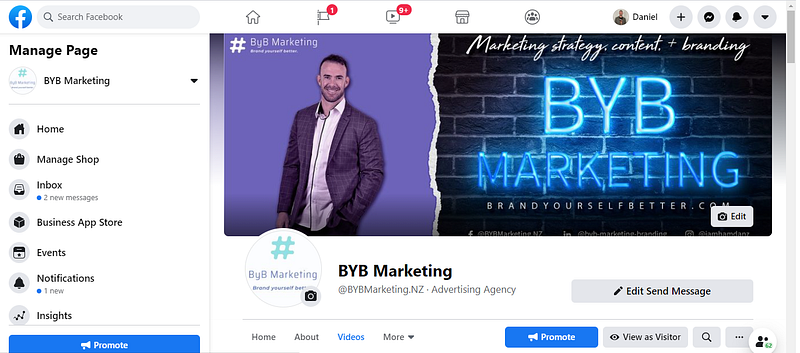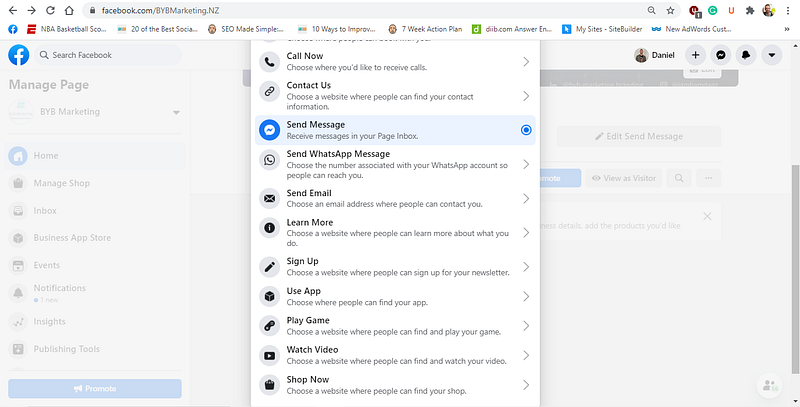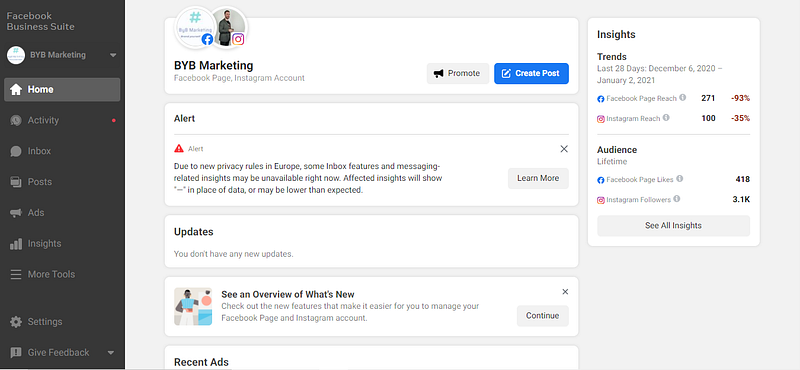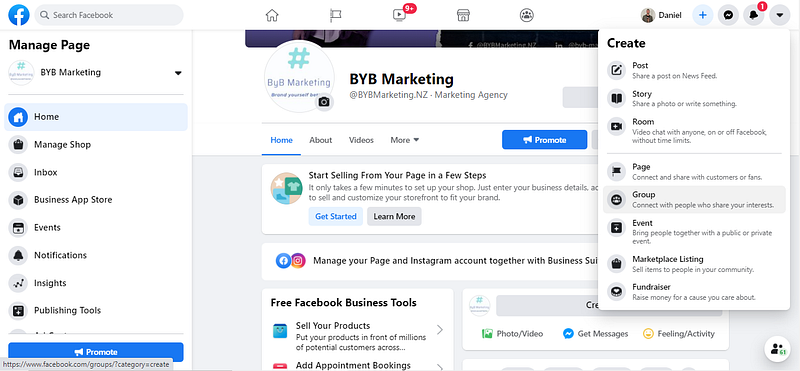
Marketing influences customer decision-making.
A person’s decision-making process for purchasing a car, holiday or a new Ice Cream brand will differ from how they make a business decision such as what printer to buy.
Therefore, the way businesses market consumer or business products or services is quite different.
This article explores these differences between B2B and B2C marketing.
Defining B2B and B2C Marketing
Before exploring the differences between B2B and B2C marketing, we must first define marketing.According to Rėklaitis & Pilelienė (2019) marketing comprises of six promotional mix elements: advertising, public relations (publicity), sales promotions, personal selling, digital marketing, and direct marketing; managed from an integrated marketing approach.

B2B stands for ‘Business to Business’, and B2C for ‘Business to Consumer’.
Therefore, they differ primarily in terms of the customer and audience. B2B sell products and services directly to other businesses and B2C sell products and services to consumers for personal use.
Examples of B2B are businesses selling the raw product to manufacturers such as timber or steel, Accountants’ customers are typically other businesses, or a company offering website building or digital marketing.
Examples of B2C businesses are the local corner store/convenience store, a website where you can buy fitness and health supplements or any store in the local shopping centre/mall.
“…Seeking to successfully plan and implement marketing communication strategies, it is important to understand the differences of business-to-consumer vs. business-to-business communication processes.” (Rėklaitis & Pilelienė, 2019)
There is some overlap between the two, and many of the practices and processes stay the same. However, some differences separate them.
Differences between B2B and B2C Marketing
In B2B, marketing communications are far more professional, rational, and less emotive than B2C.B2B is about building relationships and educating prospects; where B2C marketing uses enjoyable content and focuses on quick solutions to trigger an emotional response to a need, interest, or challenges of people in their everyday lives.
Rėklaitis & Pilelienė (2019) identify numerous differences between B2B and B2C markets.
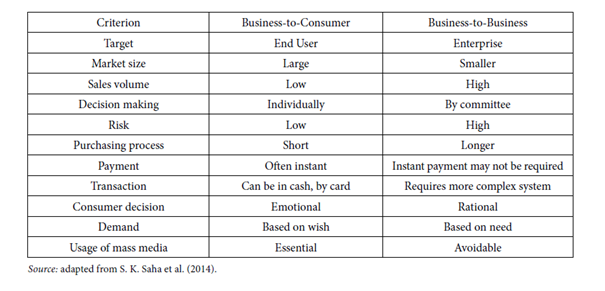
I have identified nine of the most significant differences between marketing for B2B and B2C, which are:
- The decision-maker
- The decision-making and sales process
- The motivation
- Customer relationship
- Marketing strategy
- Target audience
- Communication tools
- Language
- Purchase value and complexity
The decision-maker
Multiple staff can influence the decisions in organisations, whereas B2C often involves one decision-maker.“In B2C, there is always a particular person who is making a decision to purchase an item. Considering B2B sales, in most cases, will be more than one person to decide; therefore, knowing the decision-makers and decision-making process in B2B is very important.” Rėklaitis & Pilelienė (2019)
B2B — Multiple decision-makers or influences
We are not marketing to one just one person in B2B. Organisational processes confine purchases, and there is a chain of command to deal with in B2B, with owners, managers or other decision-makers purchasing on behalf of their organisation.The needs of the company and/or the employees drive decisions. A worker in a particular factory area might report that they need new equipment, but a manager might decide what to purchase.
Work out who the right person is to target with marketing or have a conversation with is, as marketing must reach this small group of individuals within the business, which can be easier said than done.
B2C — Decision-maker is often the customer
The decision-maker for B2C is often the customer or another family member. The decision is based on what benefits it brings to them personally or to their family member. Communication to consumers should focus on the problem you solve or help your brand provides.Marketing can reach any potential consumer for a product in a household, even if they are not necessarily the purchaser.
Reach the household decision-maker for significant items such as a new vehicle. For smaller items such as cereal for the household or cleaning products, the kids or wife could be the decision-maker or consumer, and the husband/father the customer that makes the purchase.
The decision-making and sales process
The decision-making and sales process for B2B is usually highly planned, process-driven and logical, where a B2C is often more emotional than rational.“…Based on the rationality of B2B customers and the emotionality in B2C markets, the messages of marketing communications also have to emphasise different aspects of an offering: starting with general product characteristics in B2B market and ending with pursued delight and impalpability in B2C situations.” (Rėklaitis & Pilelienė, 2019)
B2B — Slow decision-making process, highly planned and logical
B2B customers expect the business to look after them. Sales take a consultative approach, focusing on customer service before a transaction occurs, maintaining open communication.
Provide custom solutions to customers to best fit their needs, as they are often investigating alternative solutions from competitors
B2B customers spend longer researching before purchasing than B2C.
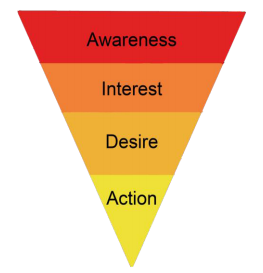
Customer progress in the Buyer Decision Process can be tracked through CRM, to understand their needs best and offer the best solution.
“B2B sector there are planned activities involved in a sales process: a purchaser has to follow the budget frames and time limitations.” (Rėklaitis & Pilelienė, 2019)
B2C — Decisions more emotional than rational
Decisions made by B2C customers are often more emotional, impulsive, less rational and vary in length and importance. Advertising often influences these decisions and customers can decide on a purchase instantly.The purchase process, therefore, should be as easy and as convenient as possible.
This shortened research, decision and sales process means social proof on social media or reviews has more influence on decision-making than B2B.
Often, when a consumer realises they have a need, they already know what kind of solution (product or service) they need. They have seen the advertising, or there is a brand they trust above others.
The Motivation
Business purchasing decisions are typically motivated by business needs, in contrast to consumer decisions often motivated by individual desire.B2B — Improve business performance
The goal of improving their business its profitability is a significant motivation for B2B customers. These customers seek efficiency and/or expertise, thinking about the impact of their business decisions. Decisions are well thought out, with little influence of emotions.Emotion is in B2B does exist, just not at the same level. You are still selling to human beings with fears, needs, and wants, and marketers should try to appeal to this. Tie emotion appeal back to improving their business performance and a return on investment.
“B2C marketing communication campaign in most cases will be based on capturing the customer’s attention immediately. Consumers’ decision will be more emotional.” (Rėklaitis & Pilelienė, 2019)
B2C — Fulfilling consumer desire
The motivation for B2C customers is the desire to improve their lives in a particular way.They could be seeking deals, entertainment, or pleasure. Purchasing a new shirt, or a holiday probably will not have the same decision-making process than choosing an accountant for their business.
Consumers do not have to think on behalf of an organisation, although they might decide for their family. Often instant gratification is the primary motivating factor.
Customer Relationships
B2B marketing focuses on forming long-term personal relationships with its target customers, whereas B2C marketing focuses on creating short-term value and efficiency.B2B — Build personal relationships
Repeat and referral business is critical is advertising is not as effective as it is for B2C, instead of forming and developing personal relationships drives B2B sales and marketing goals.“Generally speaking, building trust between seller and buyer will be the main prerequisite for a successful (B2B) deal.” (Rėklaitis & Pilelienė, 2019)Having conversations with people you know and meeting new people can be very successful for generating leads (potential customers; a reason why networking is an excellent tool for B2B businesses.
More nurturing of leads is required than B2C, paying close attention to customer needs. Good communication is needed and other customer service aspects of creating positive (or negative) associations with your brand by your practices helping separate you from competitors.
“B2B purchasing is more likely to involve more intense direct relationships and richness of pre-purchase information.” (Jussila, Kärkkäinen, & Aramo-Immonen, 2014)
B2C — Transactional relationship
The aim of B2C marketing is drive as many sales as possible in an efficient manner. The effort spent getting to know the customer is far less than B2B, as relationships are more short-term and transactional.Because of the larger markets and customer potential, instead of focusing on building close relationships with customers, the emphasis is on creating value and process efficiency.
The investment into you from B2C customers is unlikely not as deep as your investment in them. Do not bombard them with too much content outside their buying cycle. Try to make the customer experience with your website or other contact points, a positive experience to encourage their loyalty.
Focus on selling the product, one way of doing this is by using a call to action and offer incentives.
Marketing strategy
The focus of B2B marketing strategy is on lead generation through relationship building. For B2C, the emphasis is instead on branding to create an identity that attracts customers.B2B — Lead generation
Lead generation is a priority of B2B businesses. B2B purchasers rely on personal sales relatively more than advertising as a source of product information. Salespeople are integral marketing tools.Because decision-making often involves a group of people, the salesperson can talk with and negotiate with all the relevant parties at once.
Being consistent in the presentation of information, and a good reputation for delivering on promises goes a long way to drive repeat business and referrals.
Networking with other businesspeople increases your chances of bumping into past clients and acquaintances, where a conversation and introduction be your next warm sales lead. You already have built credibility through the association and introduction.
B2C — Branding
Branding is a priority for B2C marketing. Marketing should put the brand front and centre to create a lasting memory. When it comes time for customers to make a purchase, you automatically want them to think of your brand.Keep your brand in front of target consumers with email marketing and remarketing on Google. Invest in SEO or Google Ads, and identify keywords that consumers are likely to search for online when looking for products/services you offer, to rank for those keywords and improve your online search result.
Encourage happy customers to leave positive reviews. Offer them a discount on their next purchase if they leave a review, which will help create social proof for consumers in their decision-making process.
Target Audience
B2B marketing targets the multiple decision-makers of a business, where B2C is targeted directly to end-users.B2B — Multiple decision-makers/managers
In B2B marketing, it is essential to understand our target audience’s characteristics: businesses’ decision-makers. They may not be the product or service user but make decisions on behalf of staff who do.“The larger number of decision-makers/influencers in B2B means that B2B marketers must consider different media and different messages for each person involved.” (Habibi, Hamilton, Valos, & Callaghan, 2015)
Salespeople need to know who to have a conversation with — the chain of command.
With digital marketing, the more we understand these people’s demographic and behaviours, the better we can target them with smart digital advertising. It is easy to compile and then analyse data about customers through CRM.
B2C — End users
Products or services are marketed directly to end-users in a B2C market. Because of this, consumers must recognise the brand and the value you provide. Consumer markets are usually much more extensive, with much more diverse customer demographics.Create influential advertisements for mass media that give the consumer the desire for your products or services. Lead generation through social media is another effective way to reach consumers. Focus on after-sales activities rather than pre-sale to enhance the customer’s chances of retaining your brand’s favourable opinion.
Communication tools
B2B communication uses integration between digital tools and salespeople, whereas B2C commonly uses mass media such as TV or Facebook to reach audiences.“B2C companies with limited budgets often choose to rely on two or even fewer media channels, thus amplifying the risk of wasting time and resources on activities that would not lead to pursued goals and objectives. As opposed, B2B companies often use several channels for communication with their targets.” (Rėklaitis & Pilelienė, 2019)
B2B — Integration between digital tools and salespeople
However, salespeople are still essential to B2B marketing to address different decision-makers’ emotional needs.
Social media’s coordination between the sales department, operations, and marketing should ensure consistency. Content marketing through social media helps business satisfy the rational needs of the multiple decision‐makers involved in a company. Ensure consistent messages to keep a consistent brand image over time, in different contexts.
The effectiveness of social media platforms for B2C, and B2B varies. Many B2C firms have experienced great success acquired customers through Facebook or Instagram, where LinkedIn generates the most leads for B2B.
“B2B companies place a higher value on educational formats such as blogging and webinars; consumer businesses are slightly more willing to experiment with advanced digital formats…” (Habibi, Hamilton, Valos, & Callaghan, 2015)
B2C — Mass media
Facebook is a powerhouse in B2C marketing, and Instagram and Pinterest are also popular platforms for B2C. A robust visual component can help create an emotional response.B2C does not usually require a sales team (apart from retail). Instead, firms should choose the most relevant marketing channels to communicate with their target audience.
Mass marketing tools such as product placements or television advertising is far more effective for B2C than B2B.
Language
B2B marketing and sales should use industry terminology to enhance professionalism and credibility, but B2C communication should be simple, in customers’ voice and emotive.B2B — Speak the lingo
Marketing in B2B should be professional; you could lose credibility with language that is too informal.B2B customers need a salesperson or an expert in their industry terminology and knowledgeable about their business processes. They need a constructive conversation with knowledge provided about exactly what they are purchasing. Marketers must speak their language and provide detailed content.
“B2B marketers must ensure that social media messages for consumer products, which often are informal, casual and humorous, do not send a signal that the company is not technically competent.” (Habibi, Hamilton, Valos, & Callaghan, 2015).
B2C — Use emotional triggers
Marketing to consumers should use straightforward language, in the customer’s voice, so it is relatable. It should also aim to evoke the emotions of the audience to create a desire.Get right to the point with marketing and point out the benefits clearly, so it is easy to understand. The more straightforward your message is, the better. Do not use industry jargon.
It is also okay to be informal and humorous.
Consumers often purchase with the hearts over their minds and will go with their gut. Emotion often influences this ‘gut’ feeling.
We aim to entertain the audience rather than strictly educating them. B2C customers are highly motivated by personal gratification, so marketing that tells an uplifting story about someone who benefited from consuming your brand provides excellent marketing content.
“B2B products or services are often more complex than consumer products and services. Greater product complexity means that B2B purchasers tend to rely on more information.” (Habibi, Hamilton, Valos, & Callaghan, 2015)
Purchase value and complexity
The B2B the purchasing process is more complicated than B2C, taking more consideration from decision-makers, as purchases are usually of higher cost and importance.B2B — High value and complexity
Because of the higher-order values and longer sales cycles of B2B, the potential risk is heightened compared to B2C.Purchases can become quite complicated, with multiple influences on decisions. Decisions are typically long-term investments; decisions can be a complicated process with pressure to get decisions right. B2B clients often need to prove a return-on-investment for their purchase.
B2B marketers should use social media to provide informational and valuable content to reduce risk perception.
B2C — low value and complexity
Purchase values in B2C can vary greatly. Low-cost consumables from the supermarket, for example, are low cost and low risk. Do not have to educate purchasers but instead entice them.Marketing should aim to create an emotional response — food looks eye-watering tasty, clothing makes a model look more fashionable or a phone that takes better photos to create better memories. A decision is usually not complicated, often made in a split second to fulfil instant gratification motivation.
Thank you for reading.
I hope you enjoyed the content about B2C and B2B Marketing’s differences and learned something new!
In summary, there are different motivations for making business decisions and making personal decisions. Choices on what to purchase for a business is a longer process more logical and rational than the sometimes emotional decision to buy something for ourselves or our families.
Therefore, the way marketing communicates to these two customers groups will be different.
This article was originally posted on the BYB Marketing Blog: https://brandyourselfbetter.com/blog/post/223490/the-differences-between-b2b-and-b2c-marketing

